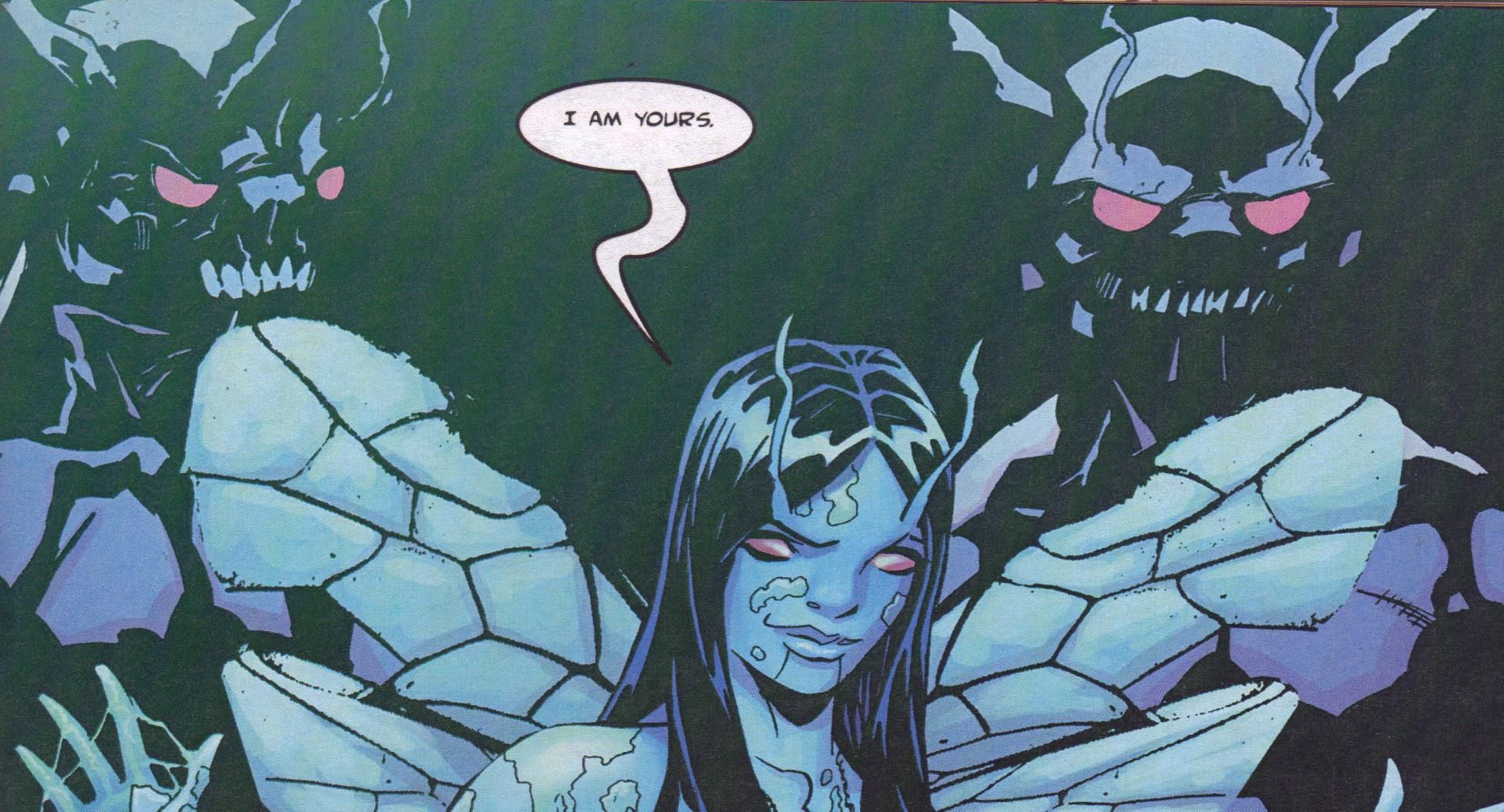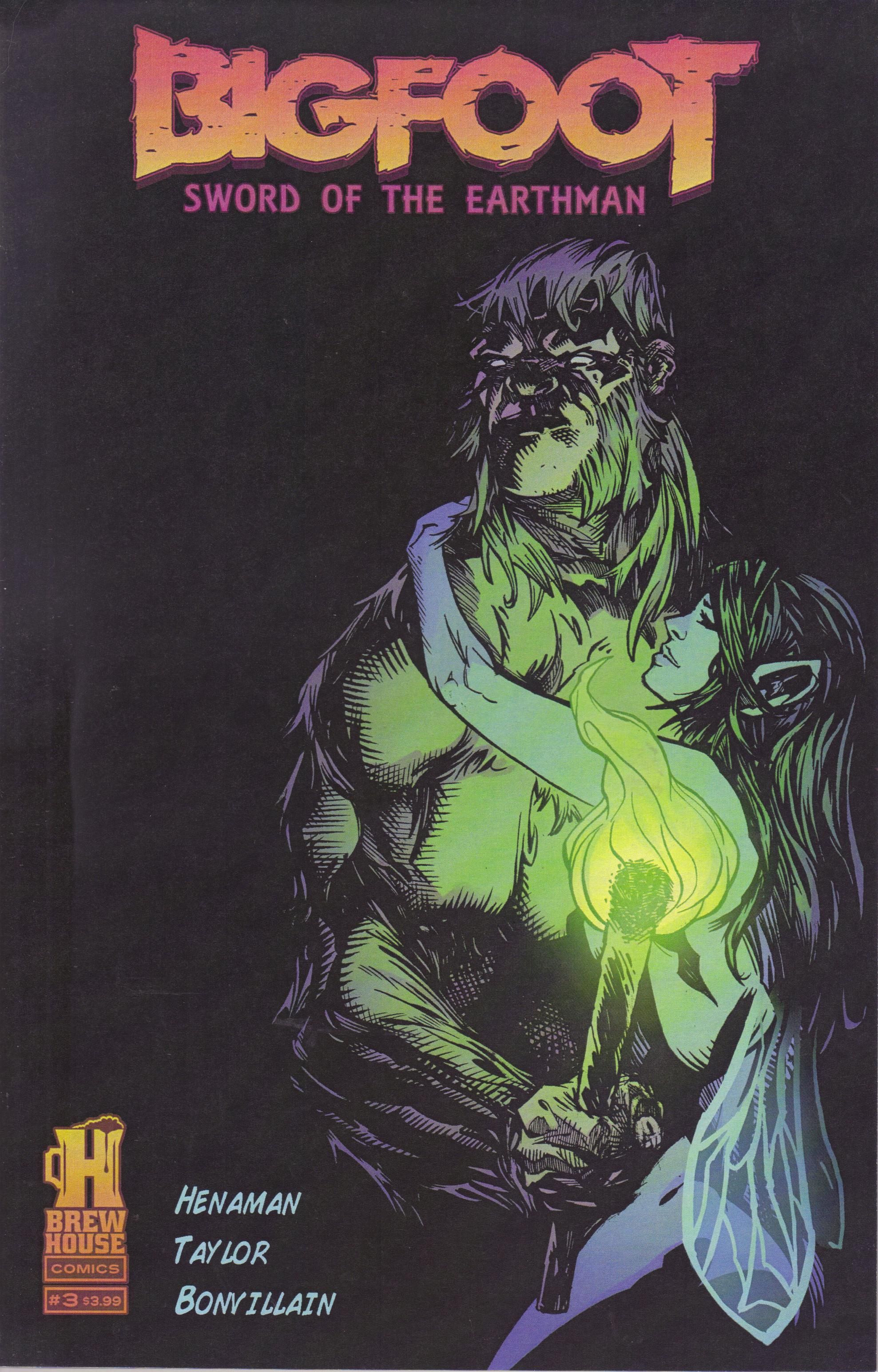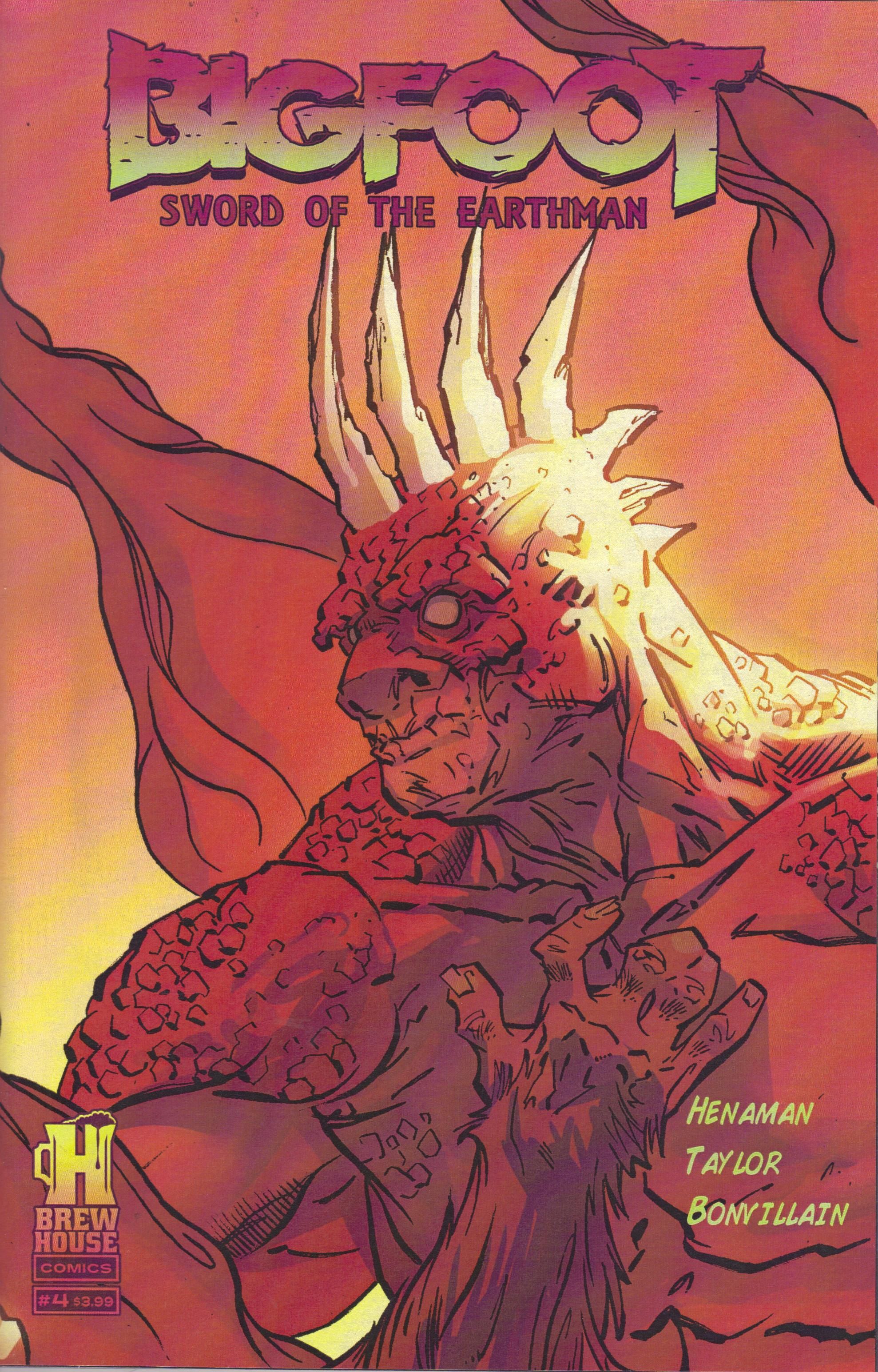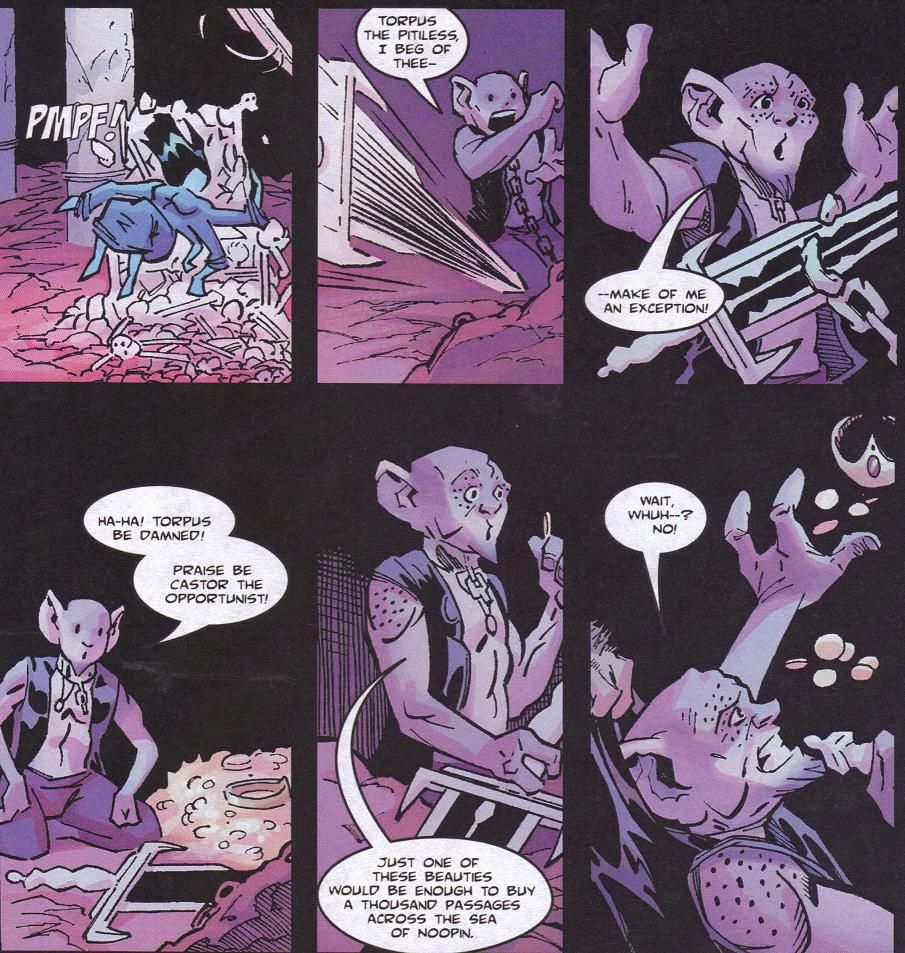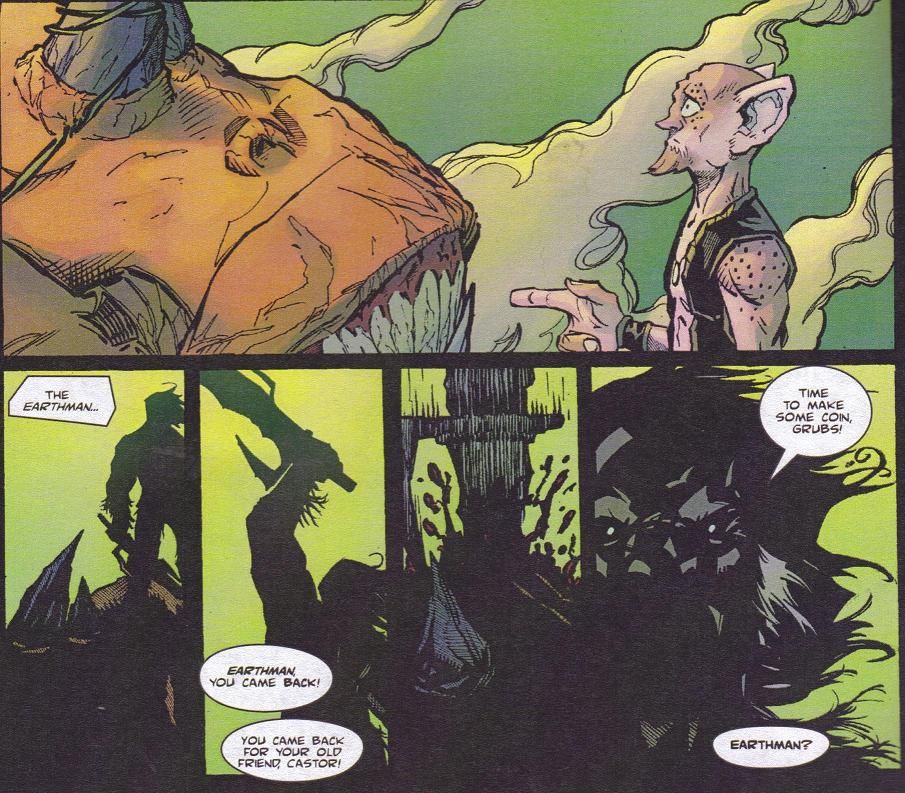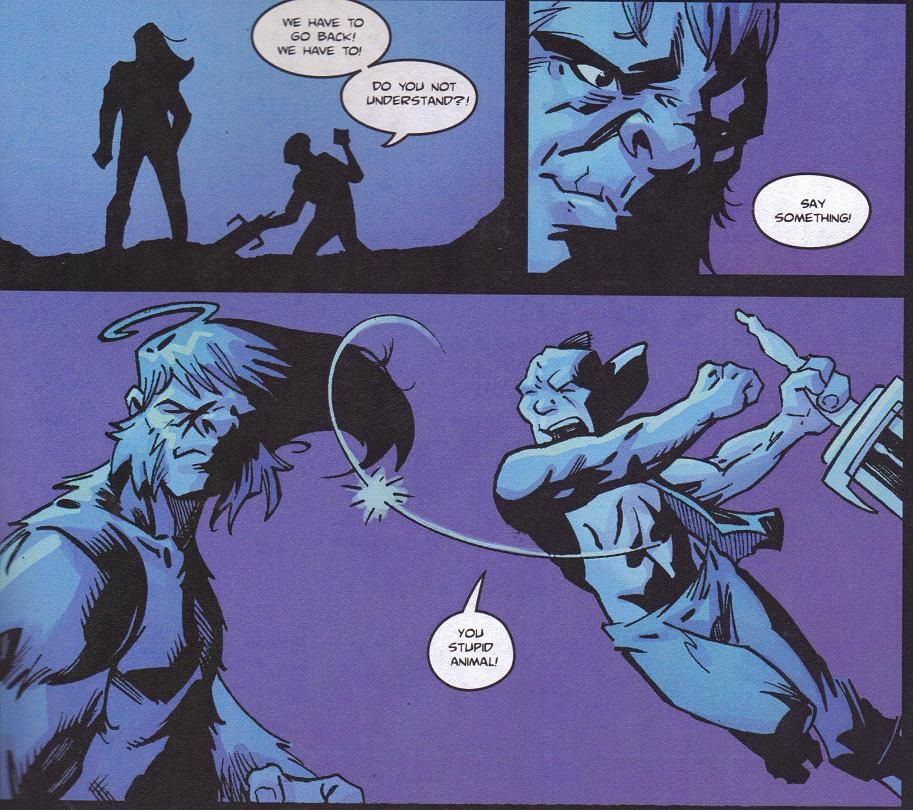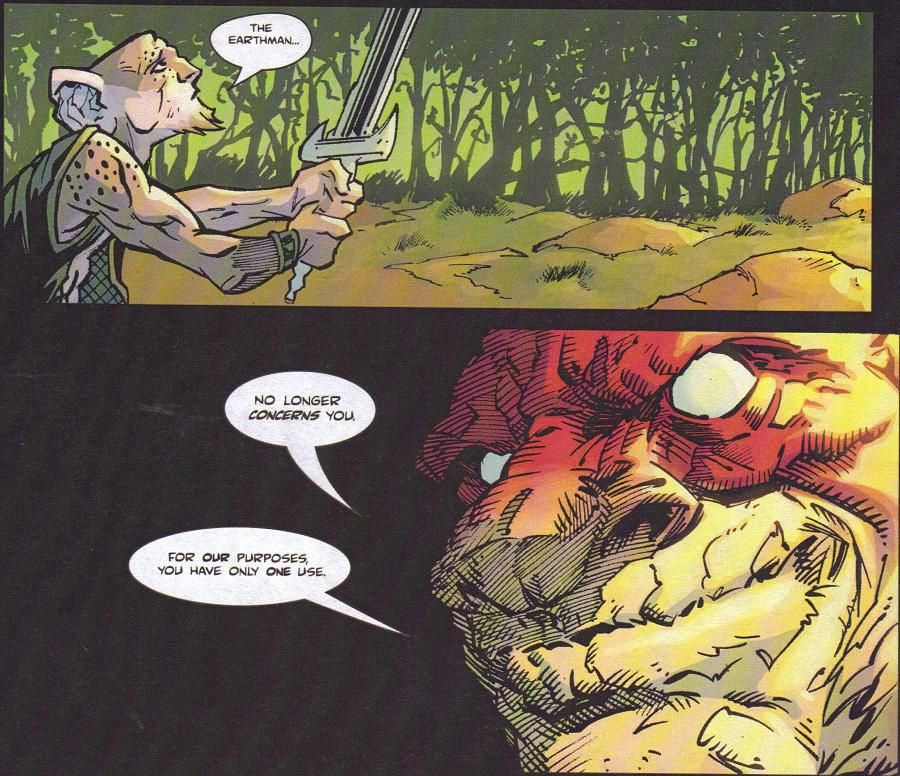"Look how far I can kick a ball / I can kick a ball to the Taj Mahal"
The fine folk at Brew House Comics were nice enough to send me the first two issues of Bigfoot: Sword of the Earthman, and now they've sent me the next two. How nice of them! I really do appreciate it, because I love reading these seriously independent comics, mainly because you know that the creators are probably eating ramen noodles and drinking old Tab just to scrape together enough money to publish their books.
The least I can do is read them and review them! Bigfoot is by Josh S. Henaman, who writes, Andy Taylor, who draws it, and Thomas Bonvillain, who colors. Each issue costs $3.99.
The series continues to move on nicely, as Henaman is doing a fine job writing single-issue stories but building a world around it. When I got the first issue, I worried that this would be a comic too dependent on its admittedly cool hook: Bigfoot on Mars. For some people, that might be enough - "Hey, look, it's Bigfoot! and he's on Mars!" - but I'm glad that Henaman has been doing some different things with the comic, because the initial hook isn't enough to sustain a series. Bigfoot is still on the run with Castor the scribe, who remains a completely unctuous scumbag (the kind of character that's enjoyable to read about but who'd you want to punch right in the face if you ever met him), and Henaman takes them to some strange places with strange characters that help fill in the history of Mars and why Bigfoot is on the planet. In issue #3, they begin as prisoners of a strange (but sexy) insectoid queen, and Castor flashes back to the end of issue #2 to show how they got there. The queen, Malona the Damned, has a scheme to mate with Bigfoot, but that goes sideways pretty quickly. Henaman takes a few pages to explain how Malona became "damned," and it has the double effect of explaining some of Mars's history. Bigfoot and Castor escape, of course, but the bad guys are still on their trail. In issue #4, Henaman does something even more interesting - he separates Bigfoot and Castor, and the eponymous hero doesn't even appear until the final page, as the issue focuses on Castor trying to escape from a prison camp and on how Bigfoot came to Mars. Henaman has been coy about how and why Bigfoot is on Mars, and this issue begins to fill in some of that mystery.
When the book began, I appreciated that Henaman started it in media res, but I also hoped he would get to how Bigfoot got to Mars in the first place. He still hasn't revealed the whole story, but that's fine - we get a little bit, and it also builds this world beyond what we've already learned. Even where Castor is imprisoned - a tropical forest - helps tell us more about Mars. There's a lot of information in issue #4, which is probably why Bigfoot is shown only a few times in flashback and only in the present on the final page, but Henaman manages to keep the narrative flowing nicely along.
As with the first two issues, Henaman makes Castor the narrator, as Bigfoot is still not talking, which remains a very good choice by Henaman. We still have no idea what his deal is, and he simply moves through this world like a force of nature, which is a good contrast with the high civilization on Mars, which doesn't know how to handle him. This is a staple of Conan stories and every Conan rip-off since - the "barbarian" upsets the apple cart of "civilized" society, but Henaman takes it even further by silencing his hero even more than the taciturn Conan or his ilk. By making Castor the narrator, we get a nice insight into Martian culture from an insider, we get an unreliable narrator whose words are weapons (in one case in issue #4, almost literally) and whose lies are part of the fun of the comic, and we get a good contrast to the hero, who is all action while Castor is almost all talk. I imagine that Bigfoot will talk at some point, but it's pretty keen that Henaman resists it, because it allows the reader to see everything he does pretty much unfiltered by preconceptions, while the reader comes to Castor with nothing but doubts.
But even Castor is becoming more of an interesting character - in issue #3, he recites the tale of Malona the Damned, and Henaman does a nice job showing how he slowly turns from being afraid of reciting it (because he thinks Malona will kill him if he does) to sad about Malona's fate. It's a good turn. He's still a jerk, but Henaman has made him slightly more complex with each issue, and that's not a bad thing at all.
Taylor's art continues to work well, although it's still better when he does close-in work and sketchier when he pulls back to show longer shots. This isn't too big a deal - it's certainly common in comics - but it seems more noticeable when Taylor does it. However, not much of the book is in long shots, so Taylor gets to add very cool details to help Henaman create this weird, wonderful world of Mars. He and Bonvillain start us in the underground cavern of Malona, and the colors are blue and purple, evoking both a strange land and the chill of Malona's realm, contrasting it nicely with the deserts in which the book began. Taylor has gotten better with each issue in the action, which is more fluid and dynamic in these issues than it was in issues #1 and 2, so the fights feel more intense. He remains good with both Castor and Bigfoot - Castor's face is malleable with emotion, both cowardly and enraged, while Bigfoot is still stoic but says quite a lot simply with his expressions. There's a beautiful and tragic panel in issue #3 that looks like it was colored with pencils (I'm sure it's by computer, but when you can use effects, you should!), and it shows a terrible flashback that forms part of Malona's story. Issue #4 is a bit more dense than issue #3, as Taylor has to get a lot onto the page, and he does a good job laying the pages out, with one unfortunate exception: after Castor escapes, there's a terrible act of violence that happens over a page turn, and it's very unclear how we get from the last panel on one page to the first panel on the next page. It's partly because, I imagine, that the creators don't want to show too much gore, but it's still an odd way to lay out the sequence. It's still a well-drawn issue, as Taylor gives us a flashback to Bigfoot's arrival on Mars (including a rendition of the famous photograph of Bigfoot fleeing into the woods) and a nice drawing of an enraged, hyperbolic version of the hero that is how some of the bad guys see him.
The green lushness of the jungle is contrasted nicely with the first sequence of the book, which is drenched in red (it's not gory, just colored red). Taylor doesn't draw as much action in this book, but he gets to be more detailed because there's a lot of close-up work, which works to his strength. He also gives us a nice, creepy final page that opens up the Martian world even more.
You can order all the issues of Bigfoot on-line, I assume (unless some of them have sold out). They might not be in your local store (they're not in mine), so you might not be able to find them in the real world. I have become more impressed with the book as it's gone along - it started fairly decently, but the creative team had gotten more confident with each issue. I'm glad that Henaman hasn't simply turned it into Bigfoot battling Martians non-stop, because that would become tedious. Instead, he's trying to create a large world through which the hero moves, and it makes the book far more interesting. It also allows Bigfoot to remain silent, because he doesn't have to carry the book even though everyone is reacting to him. If you're looking for something odd and epic, Bigfoot is turning out to be a pretty cool comic.

